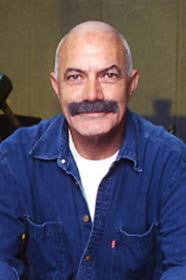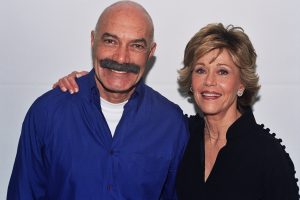Living in a world devoid of values, his characters seek the shelter of comfort and familiarity, blanketed by the blaring music of Screamin’ Jay Hawkins and Irma Thomas. Jarmusch’s talent lies in locating the weird among the mundane, highlighting the ordinary side of abnormality. But despite a post-modernist sensibility, a benign, socially-conscious poetry sneaks into his formal minimalism.
The austere, black-and-white “Stranger Than Paradise” consists of single, long-lasting shots. Not much happens by conventional standards of plot in the three vignettes that make up the tale.
In the first act, “The New World,” Willie is visited by his Hungarian cousin, Eva. In the second, “One Year Later,” Willie and Eddie go to Cleveland to visit Eva. And in the conclusion, “Paradise,” all three go to Florida.
Nonetheless, change of locale doesn’t necessarily mean change of look or outlook. “It’s funny,” says Eddie upon arrival at Ohio’s Lake Eerie, “You come to something new and everything looks the same.”
Willie (John Lurie), who emigrated from Hungary a decade ago but has since sunk into American passivity and banality, sits in his room watching TV all day. Tall and skinny, with a flattened nose that extends to his lips, he wears suspenders and a hat. His skinny buddy Eddie (Richard Edson) is virtually a twin, sporting the same nose and the same hat. The two men seem self-assured in their odd, hopelessly out-of-it style.
Into their lives comes 16-year-old Eva (Eszter Balint), just off the plane from Budapest. Smarter than either man, Eva stirs the dimwits, and the yarn turns into an oddly touching road comedy in which the trio wanders aimlessly from Lake Erie’s freezing whiteness to Florida’s motel wasteland. The surprise denouement, in which Eva accidentally lands money and proves that America is a land of opportunity, offers a perfectly absurdist finale.
A black-clad neo-hipster, Jarmusch possesses unusual technical skills and an offbeat sensibility. Pauline Kael singled out Jarmusch’s affinity with “a comic-strip” lightweight Beckett: his ordinary characters exhibit the same patience as Beckett’s toward a huge blundering universe. The reticence of Jarmusch’s style creates a peculiar sense of suspense, one never knows what to expect.
At NYU, Jarmusch worked as a production assistant on Wim Wenders’ Lighting Over Water, and the German director gave him some leftover stock. Stranger Than Paradise began as a 5-minute short, which was then expanded into a 30-minute film. Eventually, the original half an hour, which cost $8,000, became a 90-minute feature with a $110,000 budget.
Jarmusch’s goal was to make a simple but innovative film: A deadpan comedy about deadbeats. It was paramount that Stranger Than Paradise avoid categorization as a New Wave film, or be aligned with any kind of fashion or trend. Aiming at incorporating foreign influences without being derivative or imitative, Jarmusch espoused a new kind of American film, one that boasts a cool, fresh comic tone. Stranger cannot be mistaken for TV, which Jarmusch perceives as the worst threat to innovation in American film.
Unlike other indies, “Stranger Than Paradise” was not made for a niche or a pre-existing audience. Winning the 1984 Camera d’Or in Cannes and later shown at the New York Film Festival, it established Jarmusch as the most hip indie director of the 1980s, a position Quentin Tarantino would occupy a decade later. Enjoying a long run at New York’s Cinema Studio, the movie attracted a large following in other cities, eventually turning profit for its investors.
In the wake of his success, Jarmusch was courted by Hollywood producers who sent him numerous scripts to read. “They were mostly teenage sex comedies,” Jarmusch told the N.Y. Times. “It made me wonder if anyone had even seen ‘Stranger Than Paradise.'” More than aversion to sex comedies, he disdains the overdramatic style of American cinema, “where you’re always thinking about the actors as actors and not really as characters.”










